#mughal empire
Text

Emerald ring, Mughal empire, 16th-17th century
from Christies
1K notes
·
View notes
Text
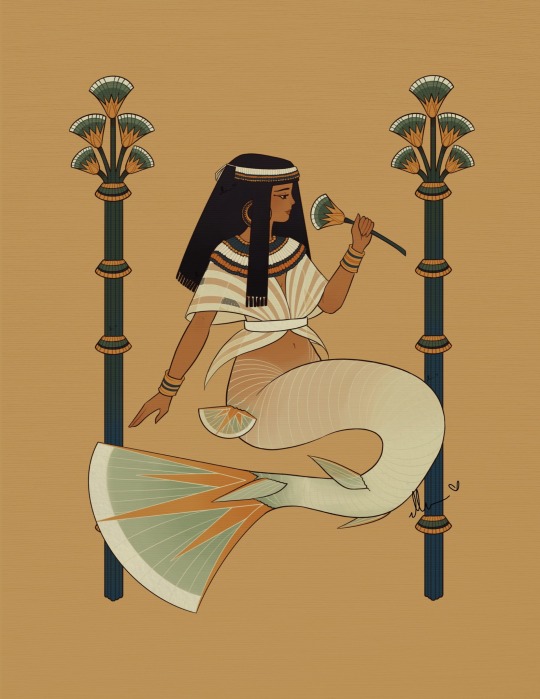




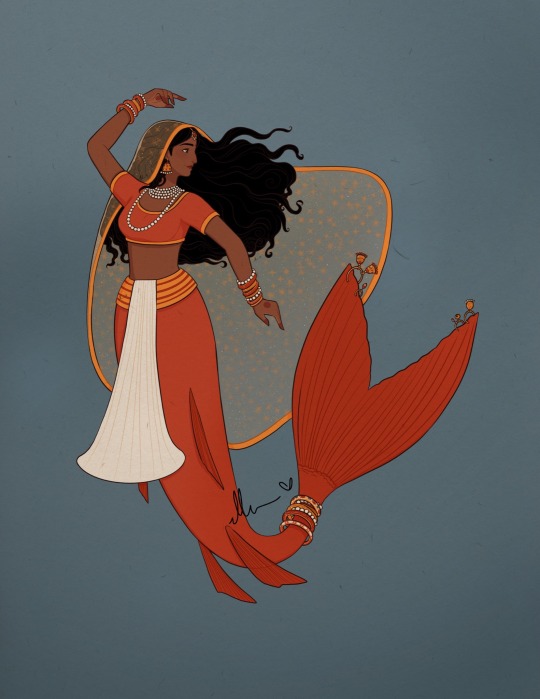


All the Historical Mermay’s together!
I had a lot of fun with this mermay prompt list by chloe.z.arts and they turned into a pretty cool collection of illustrations!
Prompt list by chloe.z.arts on instagram.
I am the artist! Do not post without permission & credit! Thank you! Come visit me over on: instagram.com/ellenartistic or tiktok: @ellenartistic
#historical mermay#mermay 2023#collection of mermaids#lnart#ellenart#historically inspired#historical fashion#it’s gonna be mermay#ancient egypt#ancient greece#tang dynasty#french medieval#italian renaissance#mughal empire#edo period#late victorian era
2K notes
·
View notes
Text
Idk who needs to hear this but removing Mughal history from history textbooks completely to the point that the future generations wouldn't even KNOW who the Mughals were, is not the way to go.
You can't just distort history and remove a chunk of it. That's a very biased way of viewing something that actually happened not even 500 years ago. History is not fiction. You can't remove the existence of real people.
When you remove Mughal history, you also remove the good and bad they did. You remove the reason behind the beautiful blend of Indo-Islamic architecture, culture and art we see today, few of the things that have implied towards a sense of harmony amidst the religious chaos that reeked back in the day. But with that, you ALSO remove the massive destruction and looting of thousands of temples, the inhumane measures, laws and punishments they put up against non-Muslims, the struggles and sacrifices of the Hindus and other oppressed groups who protested against these atrocities oh-so-courageously. You remove their cries, their brave stories. You remove the valiant fights Shivaji, Maharana Pratap and their likes put up against these people. You remove the martyrs of the several genocides these guys (especially Babur) caused. You remove them all, because once there's no Mughals, who did these brave souls fight against?
Also why only Mughals? What about the Khaljis, Mamluks, Tughlaqs, Ghaznis and others? They committed way worse atrocities than the Mughals did tbh. So with that logic all of their histories should be wiped out? But that's almost like a 700-800-year-history-wipeout we're talking about (the dates might not be accurate). And that's not how it works.
Here's a better idea. Just... show their good and their bad, and just don't glorify them and their tyranny. We keep the struggles and the sour lives the suppressed groups lived under the rule of these dynasties, and maybe glorify the brave souls who fought selflessly against them. We show how they plundered any place of worship that wasn't a mosque (or Islamic in general), and treated the idols of these religions post-destruction. We can also include the non-Islamic kingdoms and kingdoms that stood still and strong despite the invasions, like the many Hindu kingdoms in the south, then the Ahom dynasty and a few other small kingdoms in the northeast, etc. We can bring lesser-known and highly underrated non-Islamic kingdoms into light too in this process, and how they dealt with these invaders. (Half of these points are already depicted in the existing textbooks, or... atleast the textbooks *I* studied back in school, but I think they get kinda overshadowed by the subtle glorification of these invaders)
These are the solutions I'd provide. If anyone has anything to add, please do, or if yall have better solutions, pls lmk. But removing a huge chunk of history just out of pure hate and revenge like this is NOT the way to go about in the field of history LMFAO. It's the same as how that one biased historian recently claimed that no Hindu temples were destroyed by the Islamic invaders.
#keep the conversation civil btw cuz i dont wanna fight with anyone#mughal empire#ncert#cbse#cbseboard#hindublr#mughal invasion#mughal dynasty#desiblr#desiposting#desi tumblr#desi tag#islamic invaders#islamic invasion
162 notes
·
View notes
Text

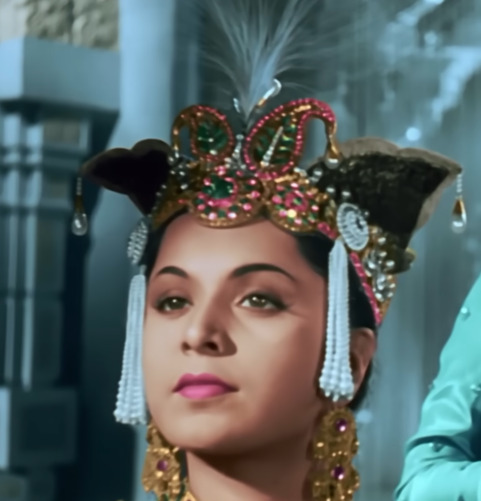
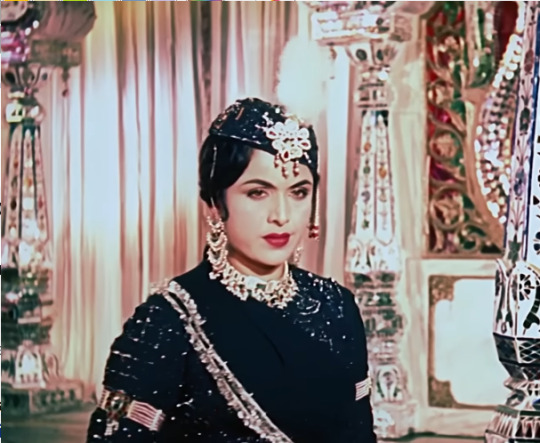
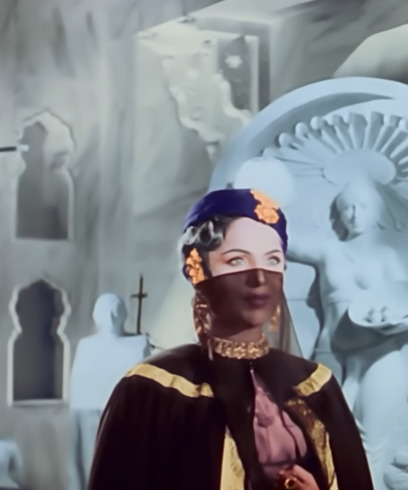







Taaz Dusro ke haatho se pehna jata hai
Bahar: "Haath dusre ke hothe hai lekin himmat apni hoti hai"
Mughal-e-Azam (1960)
#Nigar Sultana#She was a real Baddie#Mughal-E-Azam#K. Asif#ambition#royaltycore#classics#mughal e azam#vintage#bollywood#hindi cinema#indian cinema#desiblr#desi aesthetic#old bollywood#mughal empire#royalty#desi#love#Bahar#beauty
74 notes
·
View notes
Photo

Disintegration of Mughal empire after 1707
by Yellowapple1000
58 notes
·
View notes
Text
Let's talk about the idolized Aurangzeb. What he did and why is he considered great?

We will be focusing on the destruction of temples and hindu genocide done by him to debunk claims deny that this.
By the order of Aurangzeb (1645 AD) according to Mirãt-i-Ahmadî, Temple of Chintaman situated close to Sarashpur (Gujarat) and built by Sitaldas jeweller was converted into a mosque named Quwwat-ul-lslam (might of Islam) (1645 AD.) A cow was slaughtered to 'solemnize' the 'ceremony'.
Slaughtering a cow was a heinous choice, cow being one of the holiest animal in Hinduism. As well as, Hinduism prohibits animal slaughter, to do it right where their place of worship used to be where now stands a Mosque was simply to mock and destroy the souls of the indigenous population. The Pandits and Cows were always their main targets.
This was done before he even became the king, he was just a prince at this point.
When he became the king he sent Mir Jumla on an expedition to Cooch Bihar. Mir Jumla demolished ALL temples in that city and erected mosques in their stead. The general himself wielded a battle-axe to break the image of Narayana.
Mirãt-i-Ahmadî continues, In 1666 AD, he ordered the faujdar of Mathura to remove a stone railing which had been presented by Dara Shukoh to the temples of Keshav Rai. He explained: “In the Muslim faith it is a sin even to look at a temple and this Dara had restored a railing in a temple!”
You can still argue that Islamic Colonization simply had a political motif and not a religious one, if that would have been the case, none of the indigenous people would have been harmed, none of them would have been forcefully converted, their heritage would not have been destroyed right in front of their eyes, their schools and texts would have been burned. This is downright evil and was done in the name of Allah by all the Mughal tyrants.
“The richly jewelled idols taken from the infidel temples were transferred to Agra and placed beneath the steps leading to the Nawab Begum Sahib's (Jahanara's) mosque in order that they might be “pressed under foot by the true believers”. Mathura changed its name into Islamabad and was thus called in all official documents.”
In the same year, Sita Ram ji temple at Soron was destroyed as also the shrine of Devi Patan at Gonda. News came from Malwa also that the local governor had sent 400 troopers to destroy all temples around Ujjain.
According to Muraqat-i-Abul Hasan, civil officers, agents of jagirdars, karoris and amlas from Cuttack in Orissa to Medinipur in Bengal were instructed as follows:
“Every idol house built during the last 10 or 12 years' should be demolished without delay. Also, do not allow the crushed Hindus and despicable infidels to repair their old temples. Reports of the destruction of temples should be sent to the court under the seal of the qazis and attested by pious Shaikhs.”
(1672 AD) several thousand Satnamis were slaughtered near Narnaul in Mewat for which act of 'heroism' Radandaz Khan was tided Shuja'at Khan with the mansab of 3000 and 2000 horse.
(1675 AD) Guru Tegh Bahadur was tortured to death for his resistance against the forcible conversion of the Hindus of Kashmir. The destruction of gurudwaras thereafter is a well-known story which our secularists have succeeded in suppressing because the Akali brand Sikhs have been forging ties of friendship with Islam as against their parent faith, Hindu Dharma.
Mirãt-i-Ahmadî goes ahead: “On 6th January 1680 A.D. Prince Mohammad Azam and Khan Jahan Bahadur obtained permission to visit Udaipur. Ruhullah Khan and Yakkattaz Khan also proceeded thither to effect the destruction of the temples of the idolators. These edifices situated in the vicinity of the Rana's palace were among the wonders of the age, and had been erected by the infidels to the ruin of their souls and the loss of their wealth”. Pioneers destroyed the images. On 24th January the king visited the tank of Udayasagar.
His Majesty ordered all three of the Hindu temples to be levelled with the ground. On 29th January Hasan AN Khan made his appearance' and stated that “172 temples in the neighbouring districts had been destroyed.” His Majesty proceeded to Chitor on 22nd February.
Temples to the number of 63 were destroyed. Abu Tarab who had been commissioned to effect the destruction of idol temples of Amber, reported in person on 10th August that 66 temples had been levelled to the ground.’ The temple of Someshwar in western Mewar was also destroyed at a later date in the same year. It may be mentioned that unlike Jodhpur and Udaipur, Amber was the capital of a state loyal to the Mughal emperor.
Khafi Khan records in his Muntakhab-ul-Lubab: ‘On the capture of Golconda, the Emperor appointed Abdur Rahim Khan as censor of the city of Haiderabad with orders to put down infidel practices and innovations, and destroy the temples and build mosques on the sites.’ That was in 1687 AD. In 1690 AD, he ordered destruction of temples at Ellora, Trimbakeshwar, Narasinghpur, and Pandharpur.
Aurangzeb also destroyed, Kashi Vishwanath Temple in Kashi, Uttar Pradesh - which considered as the most scared hindu temple and land.
In 1698 AD, the story was repeated at Bijapur. According to Mirat-i-AhmadT: 'Hamidud-din Khan Bahadur who had been deputed to destroy the temples of Bijapur and build mosques there, returned to court after carrying out the order and was praised by the Emperor.' As late as 1705 AD, two years before he died, 'the emperor, summoning Muhammad Khalil and Khidmat Rai, the darogha of hatchet-men' ordered them to demolish the temple of Pandharpur, and to take the butchers of the camp there and slaughter cows in the temple.' Cow-slaughter at a temple site was a safeguard against Hindus rebuilding it on the same spot.
The saddest part is, all of this information, the bloodiest part of Indian History is never shown to the people, they grow up learning, Mughals were great emperors that built great things. When none of that holds any ounce of truth. It should be said without any censorship, these tyrants destroyed the culture, tradition and religions of India.
With all this information, if you're still defending these tyrants, if you still "want them around", if you still insist "it wasn't that bad", you absolutely do not care about "human rights", every activism you take part in is just performative. And I do not respect you or your opinion on any social issue.
#aurangzeb#mughal empire#hinduphobia#ancient india#colonisation in india#temple destruction#mughal invasion#hindublr#hindu temples#pseudo secularism#hindu genocide
78 notes
·
View notes
Photo

Dagger and scabbard, 1700-1875, Mughal India.
271 notes
·
View notes
Text
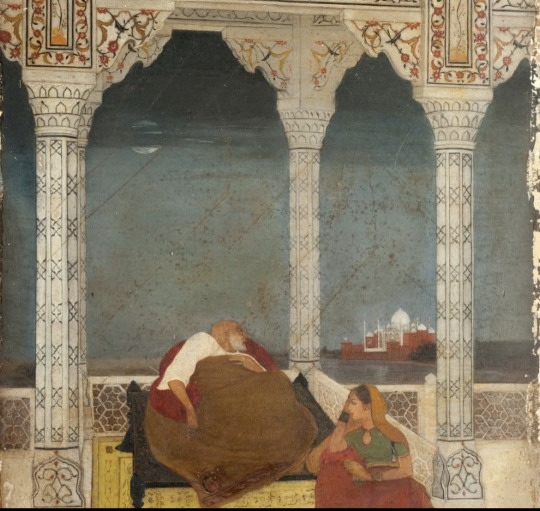
a painting of the passing of the mughal emporer, Shahjahan, looking at the taj, with his favourite daughter, Jahanara by his side
“bapa,” she whispers, clasping his wrists to feel his pulse. a damp wind rises over the yamuna river & flutters through her silk ghagra. the moon shines in its full glory, witnessing the reverence of this royal family. princess jahanara gently rocks her father whose cold skin remains still. titled the king of the world, Shahjahan, descends into the after world as a pauper. she wipes her tears, wailing and calling out to her brothers with whom he’ll unite soon.
“farewell, bapa,” she kisses his hands that smell like kashmiri apples. she rises from his side, her flushed cheeks smeared with dried salt. across the indigo river she can see the luminous tomb of her beloved mother, resting by the flowing river. she weeps, but relived that her father is out of his misery. nine years of agony & finally he can be with his begum, his aziz.
#desi tumblr#desiblr#desi tag#desi aesthetic#poetry#poets corner#indian dark academia#desi culture#desi poetry#desi stuff#desidarkacademia#desi moodboard#mughal#mughal empire#shahjahan#taj mahal#mumtaz#desi things#indian poetry#indian literature#indian history#indian painting#writers and poets#poetsandwriters#dark academic aesthetic#indian light academia#desi core
97 notes
·
View notes
Text

Basawan and Suraj Gujrati. Illustration from Baburnama or Memoirs of Babur, ca. 183-1530.
Baburnama is an autobiographical account by Zahiruddin Muhammad Babur, a descendant of Timur and the first Mughal king of India. The miniatures are from an illustrated copy of the Baburnama prepared for the author's grandson, the Mughal Emperor Akbar. Akbar’s commissions were divided up among teams of artists working at the court, and often two painters collaborated on a single image, in addition to the calligraphers. This particular illustration is attributed to Basawan, responsible for the composition and the drawing, and Suraj Gujarati, who painted it. The miniatures reflect the culture of the Mughal court at Delhi, and are important as evidence of the tradition of exquisite miniature painting which developed at the court of Timur and his successors. Timurid miniatures are among the greatest artistic achievements of the Islamic world in the fifteenth and sixteenth centuries.
#ots#art#babur#baburnama#basawan#suraj gujrati#akbar#mughal art#mughals#medieval art#indian art#miniatures#illustration#mughal empire#indian history
55 notes
·
View notes
Text

Emerald with the seal of Emperor Jahangir, Mughal Empire (India), 1018 AH (1609-1610 AD)
from The Museum of Islamic Art, Qatar
1K notes
·
View notes
Text
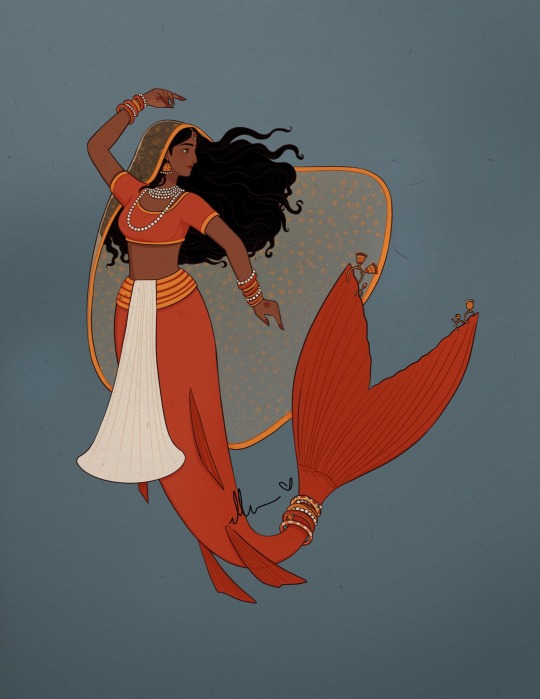

Historical Mermay 6: Mughal Empire Mermaid
This illustration had to have bright colours, sparkles, pearls, bangles and jhumka-inspired earrings. I think she turned out beautifully! (I recommend turning up the brightness for the full vibrancy, the paper texture gives it a good effect but muted the colors a bit).
I am the artist! Do not post without permission & credit! Thank you! Come visit me over on: instagram.com/ellenartistic or tiktok: @ellenartistic
#historical mermay#historically inspired#mughal fashion#mughal empire#digital illustration#lnart#ellenart#historical fashion#mermaid#mermay 2023#it’s gonna be mermay
788 notes
·
View notes
Text

Gold ring with jade and turquoise, Mughal Empire (India), 16th-18th century
from Apollo Auctions
466 notes
·
View notes
Note
Did the Ottoman Empire ever express any interest in the New World?
Not particularly, for two main reasons:

Accessing the New World would involve very disadvantageous naval wars with the Spanish Empire, who would use their incredible defensive position at the Straits of Gibraltar to interdict Ottoman vessels in the name of God and Glory.
They didn't really need the New World. The main reason why the Portuguese and Spanish had begun their overseas expansion was to bypass the Ottomans and their middle-men position athwart the Silk Road and between the Europeans and access to the Indes. Through investing in their Indian Ocean fleet and working out trade deals with the Mughal Empire, the Ottomans had direct access to the largest and richest textile markets and the Spice Islands of Indonesia.
Why go to the effort and expense of an Atlantic voyage when they had all the riches of the world practically on their doorstep?
#history#historical analysis#ottoman empire#mughal empire#silk road#spice islands#geopolitics#world history#early modern history
48 notes
·
View notes
Photo

Map of Ottoman, Safavid, and Mughal “Gunpowder” Empires
97 notes
·
View notes
Text
Maharani Durgavati
Durgavati was the daughter of King of Bundelkhand, married to Raja dalpad of Gondwana, in Madhaya Pradesh.
Soon, tragically Raja died and Queen Durgavati with her 5 year old toddler stepped up to the throne. She managed the whole kingdom exceptionally well, as recorded by Akbar’s historian. The kingdom did not suffer any major setback even after their king died.

Gondwana was a rich kingdom, with a beautiful queen which became the target of the Mughals. They didn't wanted to simply take the kingdom under their control, the commander Asaf Khan also “wanted to touch the beauty of Gondwana”.
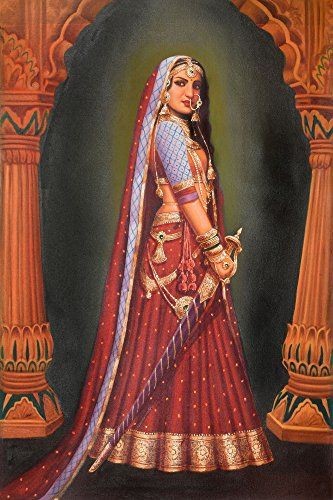
In 1564, Asaf Khan marched with 10,000 cavalries towards Gondwana, Rani Durgavati marched with 5,000 men to the battlefield.
She led the army well and killed about 500 enemies, she came out victorious by the end of the day, later she purposed to “surprise attack” the enemies or “Gorilla Attack” but none of the council members agreed to that.
By the next morning, Asaf Khan’s army was in a much better place and the fighting continued for 3 exhausting days. By that time only 200 of her men were left but the thought of giving up never once crossed her mind. Her bravery and courage never wavered.
During the battle, one arrow pierced her temple and another pierced her neck, causing her to lose consciousness. When she opened her eyes, the inevitable defeat was clear.

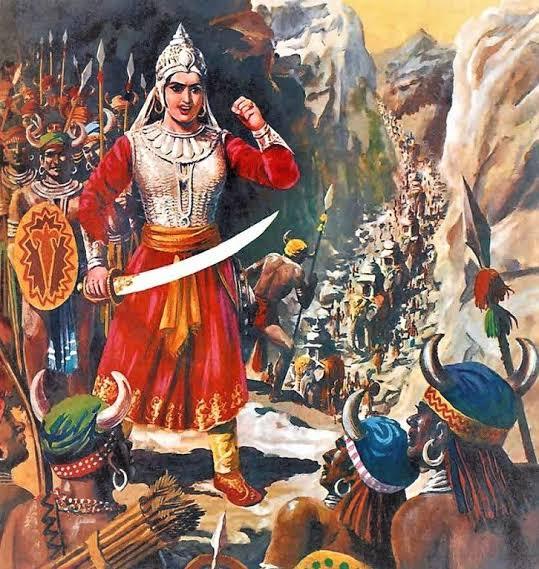
Instead of falling in the hands of men that had nothing but lust for her and would eventually throw her in Harem with other women, that previously were queens of conquered kingdoms that Mughals kept as sex slaves, she took our her dagger and killed herself to save her honor and prevent invaders from doing heinous things to her body, her martyrdom day (24 June 1564) is commemorated as “Balidan Diwas”.
The Mughal army then marched to the fort to loot it's treasure. They found staggering amount of gold pots full of gold, jewels, expensive stones etc.
When they opened a room, it was full of burnt bodies of women that commited Jauhar upon hearing the news of Rani’s defeat. These women committed Jauhar to save their honor and to prevent the Mughals from taking them as sex slaves, unfortunately 2 women were still alive, stuck behind a large wooden block that saved their lives. These two women were then taken to Akbar's court and predictably put into Harem.
#rani durgavati#india#mughal empire#gondwana#indian queen#indian history#madhaya pradesh#forgotten bharat#female warriors#women warriors#queens of india#hinduism#pseudo secularism#hindu kingdom#mughal invasion
39 notes
·
View notes
Text
Love, the force that moved even the mightiest of rulers. From the passionate flames of Antony and Cleopatra to the profound love and partnership of Cyrus the Great and Cassandane, these ancient love stories reveal the universal language of the heart.
#love#Cleopatra#Taj Mahal#Nero#Cyrus the great#Achaemenid Empire#Queen Victoria#Napoleon#Nefertiti#Mughal Empire#marriage#rulers#ancient#history#ancient origins
46 notes
·
View notes